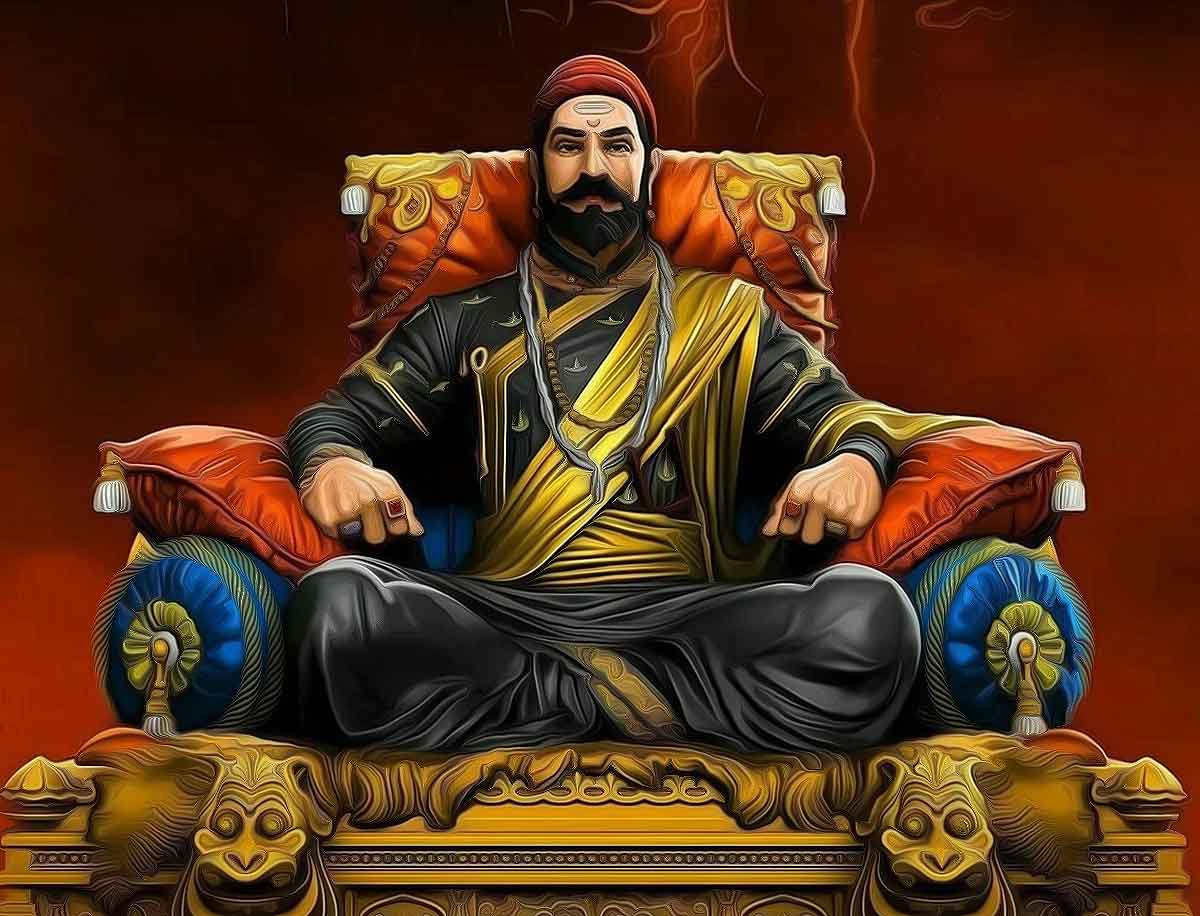MORE COVERAGE
Twitter Coverage
Satyaagrah
Written on
Satyaagrah
Written on
Satyaagrah
Written on
Satyaagrah
Written on
Satyaagrah
Written on
JOIN SATYAAGRAH SOCIAL MEDIA
Status of women in the Muslim world - Army Chief of Bijapur Sultanate Afzal Khan and the tragic story of his 63 wives whom he murdered

If you take the history of any country there are more tragic and bizarre incidents than joyous ones far beyond the ramparts and battlefields. Many of them lie hidden below the dead debris of time, but when some see the light, pain is writ large on our faces. Such narratives written in blood simply overwhelm us.
No doubt, a pale of gloom hangs over such weird events that throw light on the psychology of men responsible for them and how far they are driven by love, revenge, greed, etc depending on the problems being faced them. In the past, India is a subcontinent run by various rulers of a different faith, there is no dearth of such strange and unpalatable incidents. Some insane acts did occur outside of India, like those of Sultan Ibrahim of the Ottoman Empire. He did something unexpected; he drowned his entire harem just because one of the women had an intimate relationship with a eunuch. This tale came to light from an escaped concubine in the harem. This clearly shows the dominance of men over the weaker gender.
Prophet Muhammad, by giving divine legitimacy to polygamy and unbounded concubinage, not only degraded the status of women, but his prohibition of remarriage of his harem-inmates–likely fearing that it would divulge his sexual impotency to other men–also set on a legacy of many tragedies for Muslim women.
Have you ever heard of a brave Muslim army chief sending his 63 wives to the grave fearing his own death in the ensuing battle? Yes, such a tragic and outlandish event took place in the city of Bijapur, now in Karnataka state centuries back. In this city, ''Saat Kabar'', an isolated (5 km from Bijapur) and eerie place away from the city, silently witnessed 63 young wives mercilessly murdered by a possessive husband Afzal Khan, army chief of ruler Adil Shahi II (1571- 12 September 1627), a Sunni Muslim who remained tolerant toward Hindus and also Christians) This place has the graves of those women and the cold-blooded setting gives us an eerie feeling.
 Satth Kabar tombs of women killed by Afzal Khan |
Afzal Slew his 63 Wives
Afzal Khan was the most powerful General or Sardar (Lord) in the court of the Bijapur Sultanate. He was responsible for many victories for Adil Shah Dynasty. In 1658, Sultan Ali Adil Shah II of Bijapur was preparing to launch a military campaign against Shivaji, the indefatigable Maratha ruler. Being constantly under pressure from Aurangzeb on one side and Shivaji on the other, Adil Shah depended on his generals to stall the enemies and counted General Afzal Khan among his most trusted warriors.
Though Afzal Khan was a brave man, he had but one weakness: auguries and omens. Prior to the campaign, Khan contacted astrologers who predicted doom—his death at the hands of Maratha soldiers. At that time, Afzal Khan had 63 wives in his harem. Fearing that his wives would remarry after his death, the anxious general chose to kill all of them. Some say they were pushed into a deep well, while others say that all the 63 unfortunate wives were slain by Afzal. The astrologers proved correct; for, Khan indeed die at the hands of Shivaji at Pratapgarh.
 Satth Kabar tombs of women killed by Afzal Khan |
However, his wives lie buried just 5 km from Bijapur at a place now bears titular testimony to the uxoricide: Satth Kabar. Ironically, the tomb built by the general for himself, who wanted to be close to his wives in life and in death, stands adjacent to the one-acre burial ground surrounded by jowar fields. The site has now been declared to be of national importance under the Ancient Monuments and Archaeological Sites and Remains Act 1958, and is under the jurisdiction of the Archaeological Survey of India (ASI). Today, the tombstones are scarred by graffiti; people often come to the shady spot for rest.
“People need to hear the heartrending stories that cry out from these graves”, says the 65-year-old man who lives in a nearby house.
How did Afzal Khan die?
Afzal Khan was aware that Shivaji was on Pratapgarh, and planned to lure him out into the open plateau of Deccan, where he could destroy his forces. Khan’s strength was his giant force. At that time he took with him a force of 12,000 soldiers, many cannons, and troops mounted on elephants, horses, camels, etc. Which was more than enough to crush the force of Shivaji’s newly established ‘Swarajya’ (Self-rule). Shivaji’s men were very few in numbers and Afzal Khan was aware of this fact too. That’s why he tried to bring Shivaji out to the open plains, where they could be destroyed quickly in an open battle.
In contrast, Shivaji’s men were masters of what is known as ‘guerilla war’, where one surprises the enemy with a sudden attack causing heavy casualties and retreats quickly. So Shivaji tried his best to avoid a direct confrontation in an open field.
To compell Shivaji to come down to the plains, Afzal Khan started demolishing the temples, including the prestigious temple of Bhavani Mata. His idea was that Shivaji, a pious Hindu, would not tolerate such insult to his gods and goddesses; and immediately, he would come down to fight in an open battle. But Shivaji did not bite the bait.
Failing to lure Shivaji out into the plains, Afzal agreed to meet him at Pratapgarh, a fort near the town of Satara, a location that was strategically advantageous for Shivaji’s infantry. For the meeting, a large tent was set up at the foothills of Pratapgarh. It was agreed that the meeting would be unarmed: each side was to bring ten personal bodyguards, who would stand one arrow-shot distance away.
Both parties were, however, prepared for treachery: Afzal hid a kataar, a small and sharp dagger, in his coat. Shivaji wore armour under his clothes and carried a weapon called bagh nakh (“tiger claws”), consisting of an iron finger-grip with four razor claws, which he concealed within his clenched fist.
 |
As the two men entered the tent for a meeting, Khan pretended to greet Shivaji with a hug, and stabbed Shivaji in the back with his hidden kataar. However Shivaji, due to the armour under his coat, was saved and opened his fist and disemboweled Khan with his bagh nakh. Afzal managed to hold his gushing entrails and hurtled outside, faint and bleeding and threw himself into his palanquin. But Khan was decapitated by one of Shivaji’s bodyguards shortly down the slope.
Sambhaji Kawaji and Jiva Mahala, two of Shivaji’s bodyguards, were instrumental in protecting their king from Afzal’s bodyguards.
According to another version, on reaching the tent, Shivaji requested Afzal Khan to send his bodyguard Sayyad out of the place. As per the agreement, no one was to be present when Shivaji and Afzal Khan met. When Shivaji penetrated the tiger claws into Afzal Khan’s abdomen, injuring him fatally, Sayyad Khan entered the tent, running to his mater’s rescue. Just when Sayyad Khan was about to kill Shivaji, Jiva Mahal, a bodyguard of Shivaji, slashed Sayyad Khan, saving the life of his master.
Shivaji sped towards the fortress as his lieutenants ordered a bugle to be sounded. It was a pre-determined signal to his infantry, which had been strategically placed in the densely covered valley. All of Shivaji’s generals, including his Army Chief, Netaji Palkar, launched a surprise attack and routed Afzal Khan’s army. Afzal Khan’s son managed to escape with help from Maratha generals including Khandaji Khopade, another of many blunders committed by the Hindus in their struggle against Muslim invaders.
The severed head of Khan was sent to Rajgarh to be shown to Jijabai, Shivaji’s mother. She wanted vengeance for the murder of Shahaji, Shivaji’s father, in the captivity of Afzal Khan, and also for the death of her elder son, Sambhaji, also killed by Afzal Khan.
Ottoman Sultan Ibrahim Drowned his 280 Wives
Ibrahim, I was the Sultan of the Ottoman Empire from 1640 to 1648. He was the son of Sultan Ahmed I and was unofficially called “Ibrahim the Mad” (Turkish: Deli İbrahim), due to his unstable mental condition. However, Ibrahim was one of the most famous Ottoman Sultans, who succeeded his brother Murad IV in 1640. Murad had ordered his three other brothers executed. Ibrahim I was allowed to live because he was too mad to be a threat.
Ibrahim is known to have had an obsession with obese women, urging his agents to find the fattest woman possible. A candidate, weighing around 330 pounds (137.4 Kg), was tracked down in Georgia or Armenia. She was given the pet-name Sheker Pare (“Sugar Cube”). Ibrahim was so pleased with her that he gave her a government pension and (allegedly) a governorship. At that time, Ibrahim had 280 wives and concubines in his harem. But when he heard a rumor that his concubines were compromised by another man, he decided to kill them en masse. Ultimately, all the 280 members of his harem were drowned in the Bosporus Sea.
Eventually, Ibrahim was deposed in a coup led by the Grand Mufti. There is an apocryphal story to the effect that the Grand Mufti acted in response to Ibrahim’s drowning of all 280 members of his harem. But there is other evidence to suggest that at least two of Ibrahim’s concubines survived the mass murder. Ibrahim was ultimately strangled to death in Istanbul.
Idi Amin of Uganda
Idi Amin Dada Oumee, commonly known as Idi Amin, was a Ugandan military dictator and the president of Uganda from 1971 to 1979. Amin took power in a military coup in January 1971, deposing Milton Obote. His rule was characterized by human rights abuses, political repression, ethnic persecution, extrajudicial killings, and the expulsion of Asians from Uganda. The number of people killed by him is unknown, but an estimate from international observers and human rights groups says that it ranged from 100,000 to 500,000. After the fall of his regime in 1979, Amin fled to Libya and finally took political asylum in Saudi Arabia in 1981, where he died in 2003.
Idi Amin officially had 5 wives (many believe the actual number was much higher), one of which he had killed and dismembered to show her children what happens to someone, who disobeys him. He is also said to have over 34 concubines and many mistresses in his harem. Many believe that he was suffering from STDs, syphilis being one of them. He also had over 20 children.
More importantly, Idi Amin used to refresh his harem regularly by executing the old and condemned wives for inducting new and younger ones. Many of us might have seen the heartrending reports in newspapers in the 1970s, how the security guards led the wailing victims to the place of execution through thousands of onlookers. But the government of Saudi Arabia, by providing asylum to such a cruel killer, has made the world understand that Idi Amin had not committed any serious crime or insulted Islam by killing his wives. At that time, some journalists reported that Idi Amin was even a cannibal, who used to taste the flesh of his executed wives.
Conclusion
From the above discussions, it becomes evident that the status of women in the Muslim world is worse than domestic animals. In Arabia, during the Prophet’s times, an Arab could confine his wife in a room and kill her slowly by refusing food and water to her. Even the authors of the Arab Human Development Report 2002, have categorically mentioned that women are not considered full citizens in the Islamic world and that this oppression of the women is one of the major reasons for the Muslim world’s backwardness.
There is another point to be mentioned in this context. It has been said above that, Afzal Khan killed his 63 wives as he was afraid that, after his death, other people would marry his wives. There is no doubt that Prophet Muhammad was in the grip of a similar fear, because of which he forbade the remarriage of his harem-inmates after his death.
By Dr. Radhasyam Brahmachari
 Support Us
Support Us
Satyagraha was born from the heart of our land, with an undying aim to unveil the true essence of Bharat. It seeks to illuminate the hidden tales of our valiant freedom fighters and the rich chronicles that haven't yet sung their complete melody in the mainstream.
While platforms like NDTV and 'The Wire' effortlessly garner funds under the banner of safeguarding democracy, we at Satyagraha walk a different path. Our strength and resonance come from you. In this journey to weave a stronger Bharat, every little contribution amplifies our voice. Let's come together, contribute as you can, and champion the true spirit of our nation.
 |  |  |
| ICICI Bank of Satyaagrah | Razorpay Bank of Satyaagrah | PayPal Bank of Satyaagrah - For International Payments |
If all above doesn't work, then try the LINK below:
Please share the article on other platforms
DISCLAIMER: The author is solely responsible for the views expressed in this article. The author carries the responsibility for citing and/or licensing of images utilized within the text. The website also frequently uses non-commercial images for representational purposes only in line with the article. We are not responsible for the authenticity of such images. If some images have a copyright issue, we request the person/entity to contact us at satyaagrahindia@gmail.com and we will take the necessary actions to resolve the issue.
Related Articles
- Mohammedan needs to 'take back Babri Masjid', ISIS magazine states that Hindus are ‘filthy urine drinkers’ who learned civilized living from Muslims
- Dangers of losing our identity: Guru Tegh Bahadur forgotten and Aurangzeb being glorified
- 26th December to be observed as Veer Baal Diwas to pay gratitude to martyr sons of Guru Gobind Singh: PM Modi
- Congress-Left corporal commination, BJP’s moment of convenience: Mainstreaming the ‘Nationalist Muslim’ with the reinstallation of Hindutva
- Islamists are raging Land Jihad by encroaching iconic Maharashtra forts through illegal constructions within the premises, falsifying history by inventing fictional characters
- Darul Uloom answers modern questions: Mobile recharging and talking on phone is halal, but taking photos and Job in Paytm is haram and Angels need Identity cards to enter a house
- To be on the wrong side of history is a choice – How 21st-century invaders are capturing Chhatrapati Shivaji’s forts the way even Mughals didn’t and attempting to reclaim an invader identity unapologetically
- Advocate Rastogi noted that required evidence could be procured only through an ASI survey, ‘Land belongs to Lord Vishveshwar, Aurangzeb had no right over it’: Argument in Allahabad HC in Kashi Vishwanath-Gyanvapi dispute
- Defying Court order, Gyanvapi Mosque management committee refuses to allow videography inside the mosque and calls it unethical: Petitioner had sought permission for worshipping Gods on the outer wall of Mosque
- How Africa’s traditional religions were exterminated by Islam and Christianity
- Genghis Khan's decision to not invade Bharat (land of fabulous wealth) has perplexed historians for centuries: Mystery revealed
- NMA received outrage from Netizens for asking ASI to remove Ganesh idols from Qutub Minar complex to National Museum as it will remove the big evidence of Islamist vandalism: Ganesha is the prime god of Hinduism
- Dhimmitude is nothing but a Stockholm Syndrome
- Islamic revivalist movements in Bharat and Deoband’s link to Taliban
- ‘Liberal’ elites has issue with Hindu identity of PM Modi and emphasize "Aakhir Albert Pinto Ko Darr Kyun Lagta Hai" – Deciphering the latest rants of Naseeruddin Shah



























